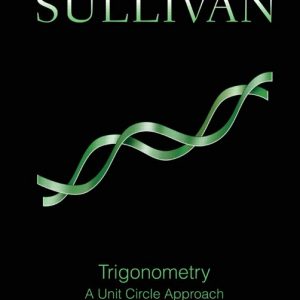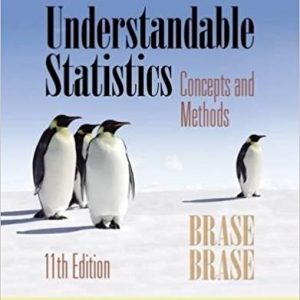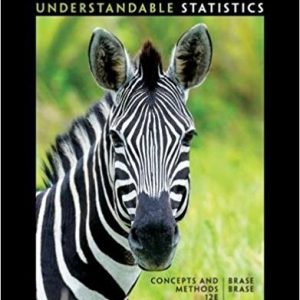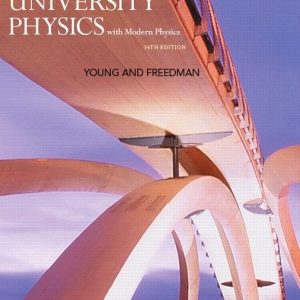Solutions Manual to accompany Engineering Mechanics: Statics 13th Hibbler 0133009548
Product details:
- ISBN-10 : 0132915545
- ISBN-13 : 978-0132915540
- Author: R.C. Hibbeler
KEY BENEFIT: R.C. Hibbeler’s text features a large variety of problem types from a broad range of engineering disciplines, stressing practical, realistic situations encountered in professional practice, varying levels of difficulty, and problems that involve solution by computer. KEY TOPICS: Maintaining the hallmark Hibbeler focus on problem-solving, visualization, and accuracy, this edition includes new problems, and elements of Conceptual Problems and Fundamental Problems. MasteringEngineering, the most technologically advanced online tutorial system available, can be packaged with this edition. MARKET: Ideal for civil and mechanical engineering professionals.
Table of contents:
1 General Principles 3
Chapter Objectives 3
1.1 Mechanics 3
1.2 Fundamental Concepts 4
1.3 Units of Measurement 7
1.4 T he International System of Units 9
1.5 Numerical Calculations 10
1.6 General Procedure for Analysis 12
2 Force Vectors 17
Chapter Objectives 17
2.1 Scalars and Vectors 17
2.2 Vector Operations 18
2.3 Vector Addition of Forces 20
2.4 Addition of a System of Coplanar Forces 32
2.5 C artesian Vectors 43
2.6 Addition of Cartesian Vectors 46
2.7 Position Vectors 56
2.8 Force Vector Directed Along a Line 59
2.9 Dot Product 69
3 Equilibrium of a Particle 85
Chapter Objectives 85
3.1 Condition for the Equilibrium of a Particle 85
3.2 The Free-Body Diagram 86
3.3 Coplanar Force Systems 89
3.4 Three-Dimensional Force Systems 103
4 Force System Resultants 117
Chapter Objectives 117
4.1 Moment of a Force—Scalar Formulation 117
4.2 Cross Product 121
4.3 Moment of a Force—Vector Formulation 124
4.4 Principle of Moments 128
4.5 Moment of a Force about a Specified Axis 139
4.6 Moment of a Couple 148
4.7 Simplification of a Force and Couple System 160
4.8 Further Simplification of a Force and Couple System 170
4.9 Reduction of a Simple Distributed Loading 183
5 Equilibrium of a Rigid Body 199
Chapter Objectives 199
5.1 Conditions for Rigid-Body Equilibrium 199
5.2 Free-Body Diagrams 201
5.3 Equations of Equilibrium 214
5.4 Two- and Three-Force Members 224
5.5 Free-Body Diagrams 237
5.6 Equations of Equilibrium 242
5.7 Constraints and Statical Determinacy 243
6 Structural Analysis 263
Chapter Objectives 263
6.1 Simple Trusses 263
6.2 The Method of Joints 266
6.3 Zero-Force Members 272
6.4 The Method of Sections 280
6.5 Space Trusses 290
6.6 Frames and Machines 294
7 Internal Forces 331
Chapter Objectives 331
7.1 Internal Loadings Developed in Structural Members 331
7.2 Shear and Moment Equations and Diagrams 347
7.3 Relations between Distributed Load, Shear, and Moment 356
7.4 Cables 367
8 Friction 389
Chapter Objectives 389
8.1 Characteristics of Dry Friction 389
8.2 Problems Involving Dry Friction 394
8.3 Wedges 416
8.4 Frictional Forces on Screws 418
8.5 Frictional Forces on Flat Belts 425
8.6 Frictional Forces on Collar Bearings, Pivot Bearings, and Disks 433
8.7 Frictional Forces on Journal Bearings 436
8.8 Rolling Resistance 438
9 Center of Gravity and Centroid 451
Chapter Objectives 451
9.1 Center of Gravity, Center of Mass, and the Centroid of a Body 451
9.2 Composite Bodies 474
9.3 Theorems of Pappus and Guldinus 488
9.4 Resultant of a General Distributed Loading 497
9.5 Fluid Pressure 498
10 Moments of Inertia 515
Chapter Objectives 515
10.1 Definition of Moments of Inertia for Areas 515
10.2 Parallel-Axis Theorem for an Area 516
10.3 Radius of Gyration of an Area 517
10.4 Moments of Inertia for Composite Areas 526
10.5 Product of Inertia for an Area 534
10.6 Moments of Inertia for an Area about Inclined Axes 538
10.7 Mohr’s Circle for Moments of Inertia 541
10.8 Mass Moment of Inertia 549
11 Virtual Work 567
Chapter Objectives 567
11.1 Definition of Work 567
11.2 Principle of Virtual Work 569
11.3 Principle of Virtual Work for a System of Connected Rigid Bodies 571
11.4 Conservative Forces 583
11.5 Potential Energy 584
11.6 Potential-Energy Criterion for Equilibrium 586
11.7 Stability of Equilibrium Configuration 587 Appendix





